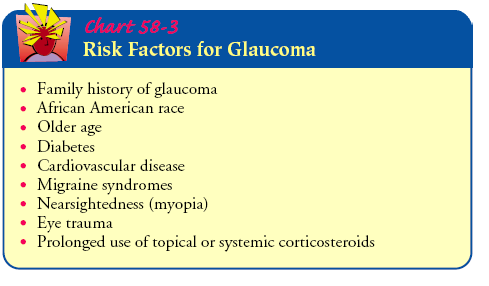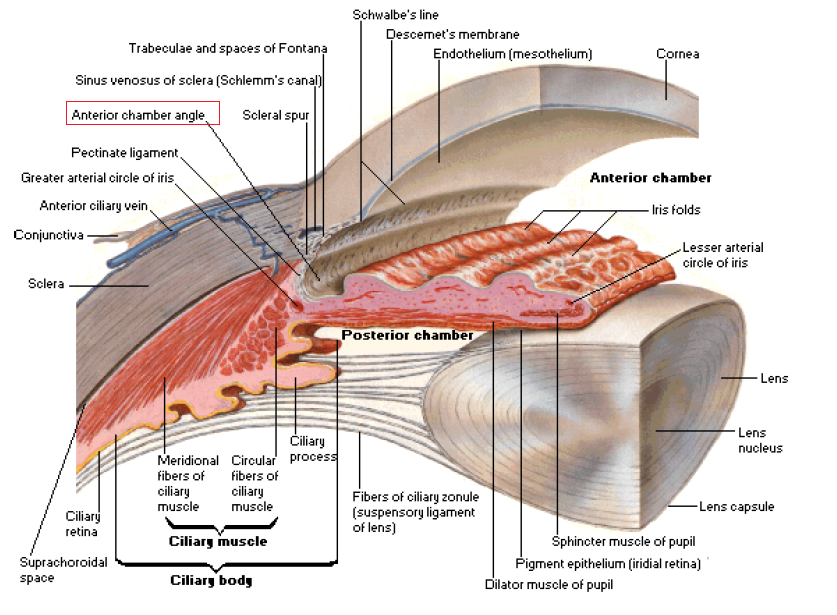Glaucoma
Definition
A group of ocular conditions characterized by optic nerve damage
Increased Intra Ocular pressure
Due to congestion of aqueous humor
One of the leading causes of irreversible blindness
After 40 yrs. Increasing with age
It is > in men
Normal IOP : 10 to 21 mm Hg
Risk Factors
Family history of glaucoma
African/American race
Older age
Diabetes
Cardiovascular disease
Migraine syndromes
Myopia
Eye trauma
Prolonged use of topical or systemic steroids
Other factors increasing the IOP and further damage to optic nerve
Mydriatics
Structural alterations in the aqueous outflow system
Functional alterations :
Pathophysiology
Aqueous humor circulates within tha anterior chamber
Goes out thru the spongy trabecular mesh work into the canal of Schlemm' episcleral veins
Also thru the ciliary body into the suprachoroidal space ' veins of the ciliary body, choroid, and sclera
The angle between the iris and the cornea : normal 45 ? - when the angle narrows drainage is obstructed.
Elevation in IOP occurs in - intraocular conditions such as uveitis, retinal detachment - hypertension
Lowering occurs in cold weather, alcohol, a fat free diet, heroin and marijuana
The increases IOP damages the retinal layer and the optic nerve - optic atrophy ' visual loss
Classification
Open angle glaucoma
Closed angle glaucoma
Congenital glaucoma
Clinical Manifestations
Silent thief of sight
Difficilty focussing
Difficulty adjusting eyes in low lighting
Loss of peripheral vision,
Aching or discomfort around the eyes
Headache
Investigations
Tonometry
Ophthalmoscopy - look for pallor and cupping of the optic nerve disc
Gonioscopy - to assess the angle of the anterior chamber
Perimetry - to assess visual fields
Medical Management
Life long
Not cured but controlled
Topical betablockers
One eye is treated first the other eye is compared and later that eye also is treated
Cholinergics (miotics) - pilocargpine, carbachol - contracts the ciliary muscle and opens the trabecular meshwork - increases the aqueous fluid out flow
Adrenergic agonists - dipivefrin, epinephrine - Reduces productio of aqueous humor and increases outflow
Beta-blockers - betaxolol, timolol - decreases aqueous humor production
Alpha adrenergic agonists - apraclonidine, brimonidine - decreases aqueous humor production
Carbonic anhydrase inhibitors - decreases aqqueous humor production
Prostaglandin analogs - latanoprost - increases uveoscleral outflow
Surgical Management
Laser trabeculoplasty
Laser iridotomy
Filtering procedures for chrnonic glaucoma - Trabeculectomy
Drainage implants or shunts
Nursing Management
Teach patients about glaucoma care - only controlled - not cured - life long tt - strict adherence to the drug regimen
Continuing Glaucoma care at home
To be careful because the loss of peripheral vision hinders with mobility
Reassurance
Emotional support
Familial tendency- to be informed to the other members of the family
Family members to be screened periodically
1757




